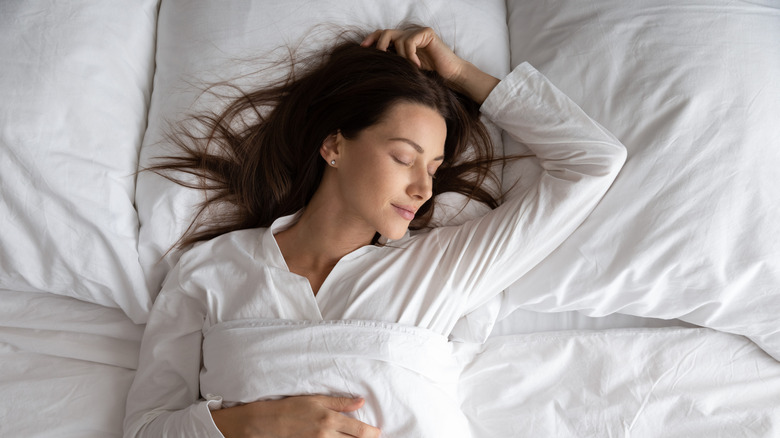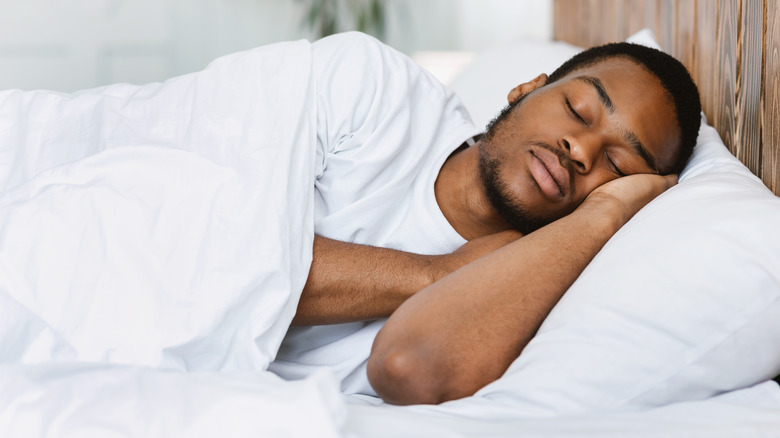This Is The Best Sleeping Position For Your Back
A stable back is crucial for your overall health. Back problems can make sitting, standing, and walking go from normal activities to difficult tasks. We all know that things like posture and exercise affect our backs, but it surprises some people to learn that our sleeping position can impact the flexibility and stability of our backs as well. Some sleeping positions are better for our backs than others. Here's what you should know.
If you have lower back pain, sleeping in the wrong position can make it worse by straining your spine while you doze (via Medical News Today). The most ideal position for sleeping is on your back because it keeps your spine in its natural alignment. However, this position is uncomfortable for many people and may lead to snoring. One variation of this position is to sleep on your back with a small pillow placed under your knees. This may be more comfortable and still keeps your spine naturally curved while you sleep. Some people with significant back pain may find the most comfort in a reclined chair or bed instead of lying all the way down.
Certain side and stomach sleeping positions can also help your back
If you absolutely can't fall asleep on your back, there are still several other sleeping positions that won't hurt your spine. According to Healthline, lying on your side with a pillow between your legs is ideal for people who are side sleepers. The pillow keeps your hips, pelvis, and spine in alignment while you snooze. If you want to sleep on your side but don't want a pillow between your legs, try a fetal position. You can do this by lying on your side and bringing your knees as close to your chest as possible.
If you're a stomach sleeper, you can improve your sleeping position with the help of a pillow. Stick a pillow under your stomach and lie on top of it. This will push your hips back and avoid added stress on your spine and neck while you sleep. Regardless of what position you sleep in, you should try to find ways to align your hips, pelvis, and spine. This can often be done with the help of a strategically placed pillow. You should be able to tell whether or not your spine is aligned by how your back feels while you're lying down and when you get up in the morning. Experiment with different sleeping positions until you find something that makes your back feel better when you wake up.


